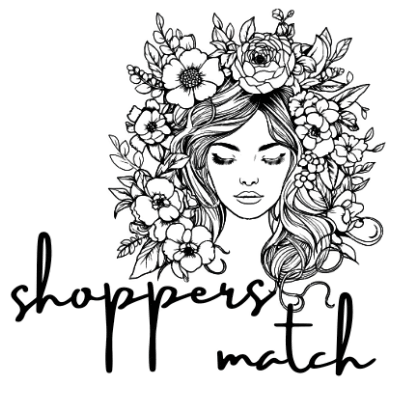
Introduction to 3D printing technology
In the dynamic world of fashion, innovation is key. As trends evolve and creativity knows no bounds, a revolutionary technology has emerged on the scene: 3D printing. This groundbreaking technique allows designers to transform their wildest ideas into tangible pieces of art. Welcome to the era of 3D-printed couture, where digital craftsmanship meets high fashion. Imagine garments that not only push the boundaries of design but also challenge traditional notions of sustainability in an industry often criticized for its environmental impact. Join us as we explore how this cutting-edge technology is shaping the future of style and redefining what it means to wear fashion today.
The emergence of 3D-printed fashion
The fashion industry is undergoing a remarkable transformation with the rise of 3D-printed couture. Designers are increasingly embracing this technology to push creative boundaries and redefine traditional garment creation.
From intricate patterns to complex structures, 3D printing allows for unprecedented design freedom. Fashion shows are now featuring garments that were once thought impossible to produce by conventional methods.
Innovative brands such as Iris van Herpen have made headlines by showcasing stunning 3D-printed pieces on runways around the world. This excitement has sparked interest among both established designers and emerging talents seeking new avenues for expression.
As the market continues to evolve, collaborations between tech companies and fashion houses become more common. These partnerships fuel advancements in material science, enabling even bolder designs that challenge our perceptions of clothing today. The future looks bright as we witness this synthesis of art, technology, and fashion innovation unfold before our eyes.
Advantages of using 3D printing in the fashion industry
3D printing is redefining the possibilities in fashion design. It offers unparalleled customization, allowing designers to create pieces tailored precisely to individual measurements and preferences. This level of personalization enhances customer satisfaction and loyalty.
Speed is another significant advantage. With traditional manufacturing methods, producing a garment can take weeks or even months. 3D printing streamlines this process, enabling rapid prototyping and quicker turnaround times from concept to runway.
Moreover, the technology reduces waste significantly. Traditional fashion production often results in surplus fabric that ends up discarded. In contrast, 3D printers utilize only the material needed for each piece, promoting a more sustainable approach.
Cost efficiency also plays a role here. As the technology advances, it becomes increasingly affordable for designers at various levels of experience and budget constraints to experiment with innovative ideas without exorbitant financial risks.
Innovative designs and collaborations
The realm of 3D-printed couture is alive with creativity. Designers are pushing boundaries like never before. Unique textures and intricate patterns emerge from digital sketches, transforming into wearable art.
Collaborations between tech innovators and fashion houses are redefining what’s possible. High-profile partnerships, such as those between established designers and cutting-edge startups, showcase the potential of this technology.
Imagine garments that change color or structure on demand—these visions are becoming reality through innovative design processes. Brands like Iris van Herpen lead the charge, merging artistry with engineering to create stunning pieces that captivate audiences.
Every new collection tells a story of relationship-building among artists, engineers, and manufacturers. This synergy inspires fresh ideas while challenging traditional craftsmanship norms in high fashion. The result? Couture that feels futuristic yet intimately connected to its creators’ artistic vision.
Impact on sustainability and waste reduction in the fashion industry
3D-printed couture is making waves in sustainability. Traditional fashion production often leads to excess waste, with countless fabrics discarded each season. In contrast, 3D printing uses only the material needed for each design.
This technology allows designers to create intricate pieces without falling into overproduction traps. Instead of cutting fabric from large rolls, it builds garments layer by layer. This precision minimizes leftover textiles that typically end up in landfills.
Moreover, many brands are experimenting with biodegradable and recyclable materials for their prints. These innovations help reduce harmful environmental impacts associated with conventional manufacturing processes.
As consumers become more environmentally conscious, 3D-printed fashion offers a compelling solution to merge style with eco-friendliness. With every new creation, the industry moves closer to a sustainable future where elegance doesn’t sacrifice our planet’s health.
Challenges and limitations of 3D-printed couture
3D-printed couture presents exciting opportunities, but it also faces significant challenges. One major hurdle is the high cost of 3D printing technology and materials. Not every designer can afford cutting-edge printers or specialty filaments.
Another limitation lies in the complexity of designs. While intricate patterns are possible, they often require advanced knowledge and expertise to execute properly. This complexity can lead to longer production times, which doesn’t align with the fast-paced fashion cycle.
Moreover, not all fabrics lend themselves well to 3D printing techniques. Some textures and drapes that are crucial for high fashion simply can’t be replicated digitally yet.
There’s a perception barrier among consumers regarding wearability and comfort. Many still question whether these innovative garments can match traditional fashion’s elegance and fit seamlessly into everyday wardrobes.
The future of 3D-printed fashion
The future of 3D-printed fashion is brimming with possibilities. As technology advances, designers are pushing boundaries like never before. Customization will become the norm rather than the exception.
Imagine walking into a store and selecting a design that can be tailored to your personal style in real-time. This level of personalization could redefine consumer expectations.
Moreover, collaborations between tech companies and fashion houses are on the rise. These partnerships promise innovative materials that respond dynamically to environmental conditions or even user preferences.
The concept of on-demand production may eliminate overstock issues entirely. By creating garments only as needed, brands can significantly reduce waste while still delivering cutting-edge designs.
With augmented reality becoming more accessible, shoppers might soon preview how these digital creations fit their unique silhouettes before making a purchase decision. The intersection of technology and artistry holds endless potential for high fashion’s evolution.
Conclusion: How 3D printing is revolutionizing the world of high fashion
The rise of 3D-printed couture is reshaping the landscape of high fashion. This groundbreaking technology opens doors to innovative designs that push the boundaries of creativity and individuality. With brands embracing digital fashion innovation, we see a shift towards personalization and uniqueness in garments.
Sustainability remains at the forefront as designers leverage 3D printing to minimize waste. Traditional manufacturing often leads to excess materials and discarded products. In contrast, additive manufacturing creates pieces tailored precisely to demand, reducing surplus and promoting eco-conscious practices.
However, challenges persist. The current limitations in material selection and production speed need addressing for broader acceptance within the industry. Yet, collaborations between tech innovators and established fashion houses indicate a promising future where these hurdles can be overcome.
As more creators explore this realm, it’s clear that 3D printed couture isn’t just a fleeting trend; it’s an evolution in how fashion is conceived, created, and consumed. The impact on consumer experience will be profound as individuals increasingly seek out unique pieces crafted through advanced technologies.
Fashion lovers are witnessing a remarkable transformation—one that’s not only about style but also about responsibility toward our planet and creativity without bounds.








